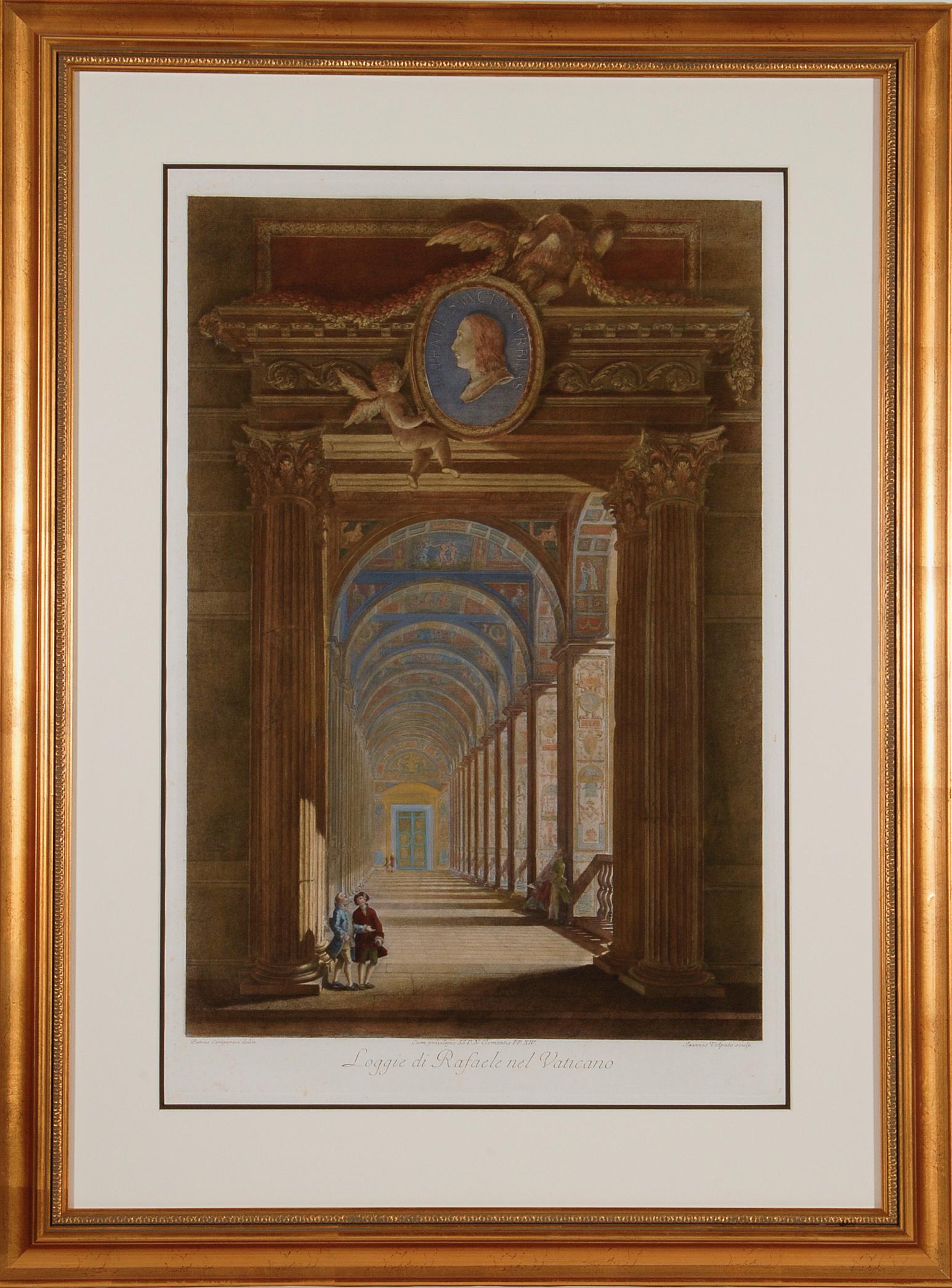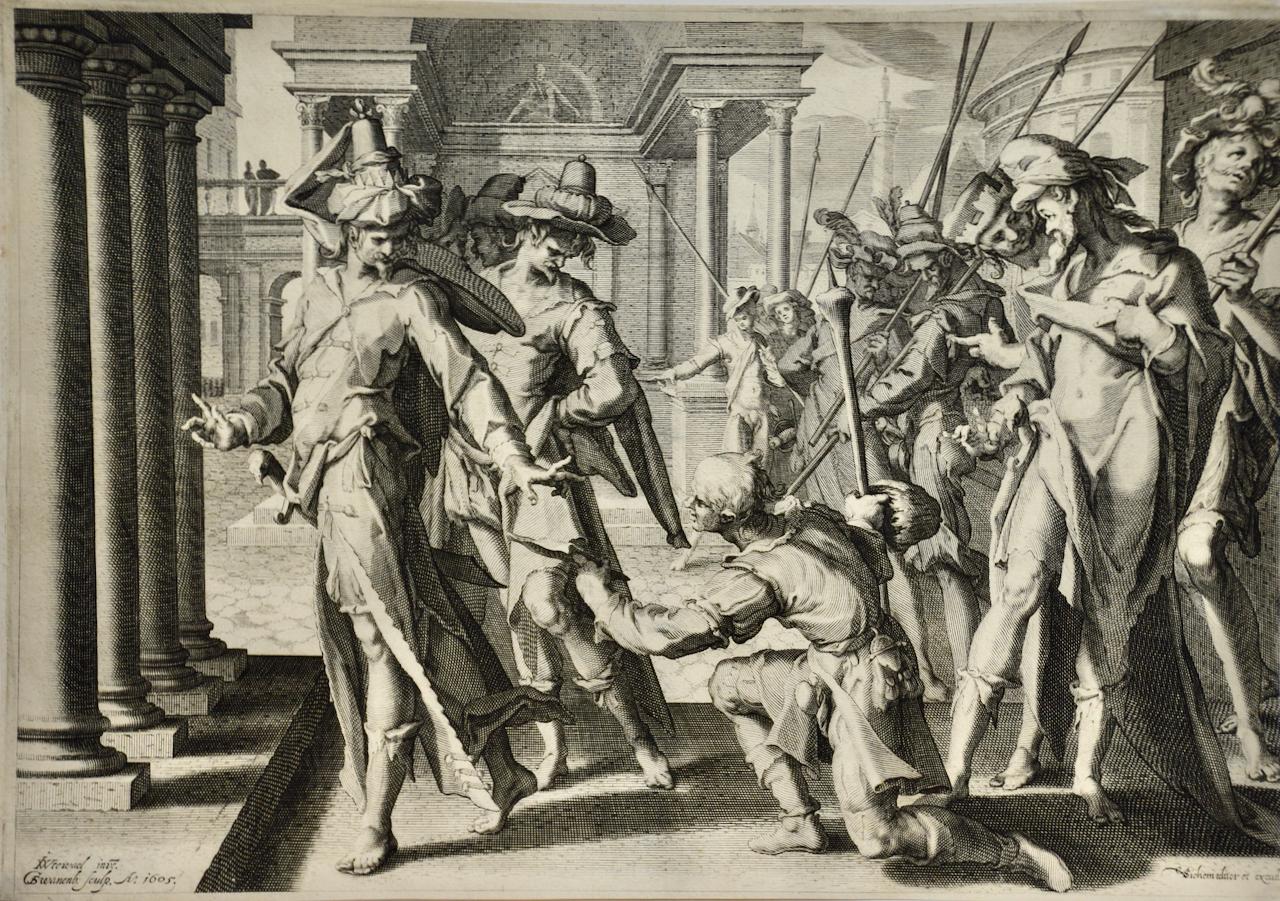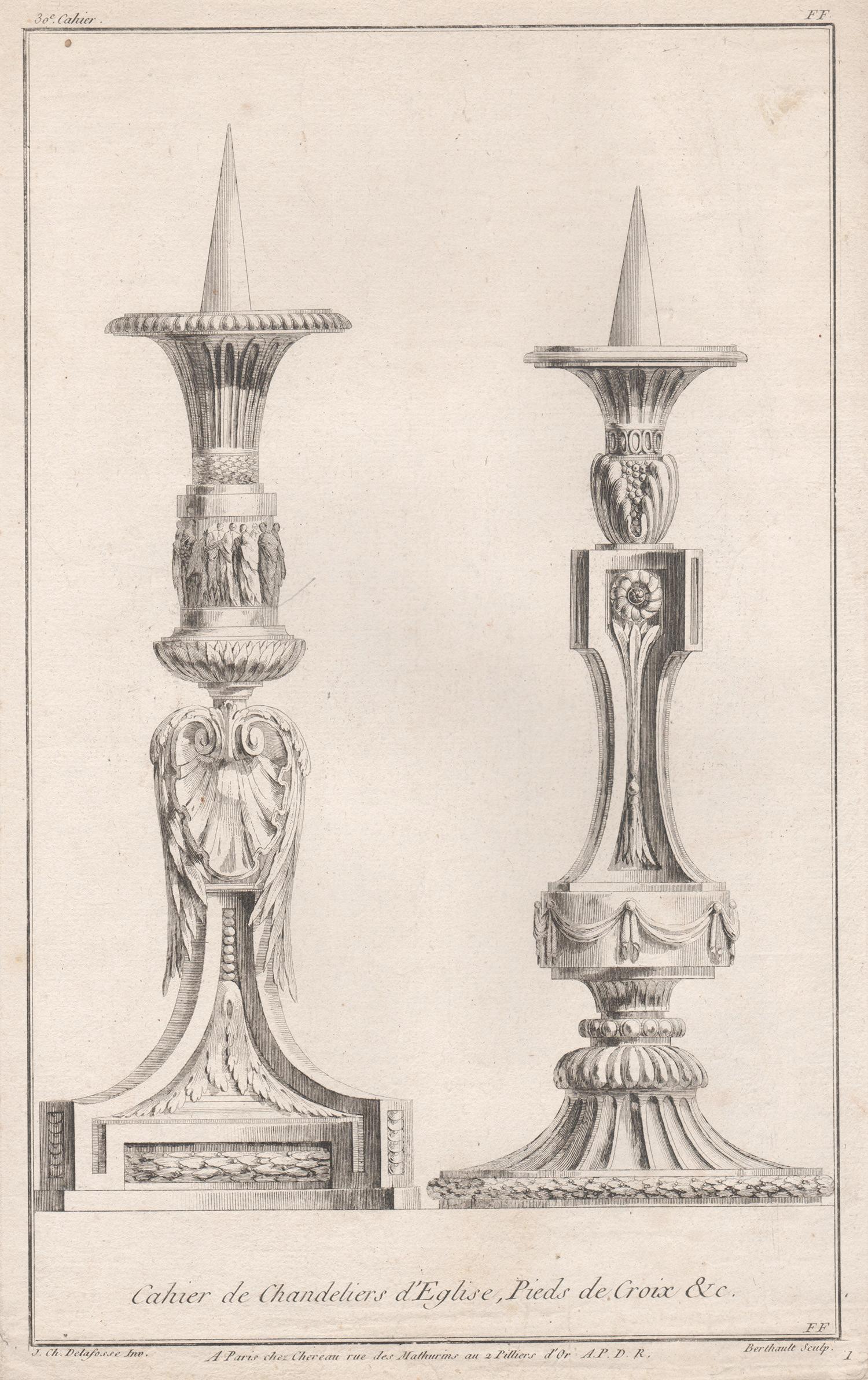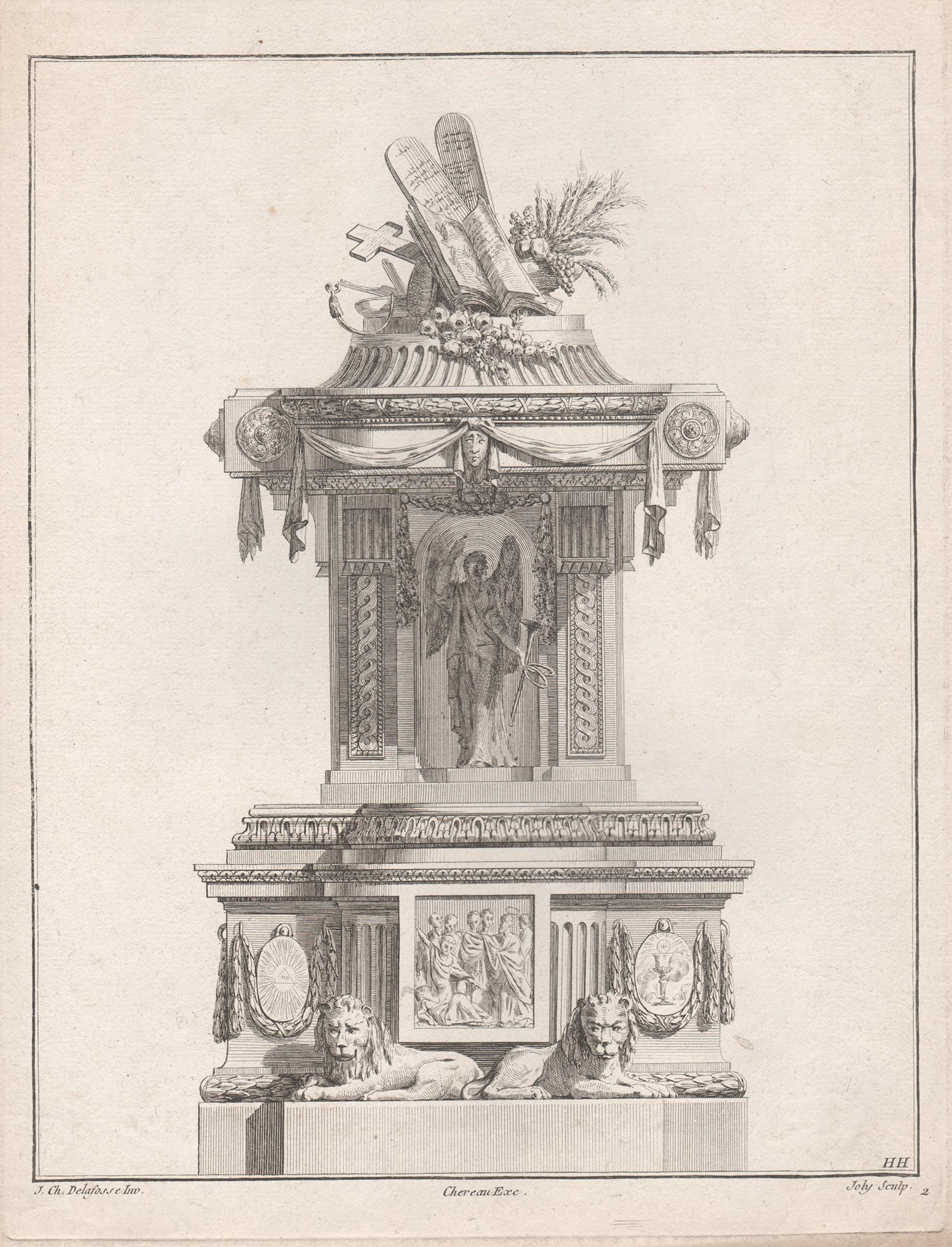Items Similar to The Card Game: An Early 17th Century Engraving by A. Voet after Cornelis de Vos
Want more images or videos?
Request additional images or videos from the seller
1 of 12
Alexander Voet The Card Game: An Early 17th Century Engraving by A. Voet after Cornelis de Vos1632
1632
About the Item
A 17th century engraving entitled "The Card Game" by old master artist Alexander de Voet after a painting by Cornelis de Vos, created in 1632. The painting by de Vos is in The National Museum, Stockholm, Sweden (Inv. #689, Cat. 1990, pg. 383). The engraving by Voet is a technical masterpiece, which is quite rare and infrequently seen in museum collections and is rarely for sale. It is in the collections of The British Museum, The Rijksmuseum and The National Galleries of Art, Washington, DC. Reference: Holstein 17 (only state)
This beautiful engraving is presented in a cream-colored mat, measuring 20" x 26". The sheet measures 13.5" x 16.5". The engraving is a very fine impression in very good condition. It is trimmed along the border on the upper and left sides and beneath the inscription below the image. It is laid down on an album leaf.
The engraving depicts two elegantly dressed gentlemen on the left awaiting the couple on the right to play their hand. The man is showing his hand to a woman. The scene is one of splendid exuberance. All of the players appear quite wealthy. They are seated at a long table set with a silver jug of wine, a wine glass, bread and butter or another spread. The handsome young man on the right shows his hand to an attractive young woman as their heads touch romantically. A young attendant stands behind the two men on the left, staring at their cards. The six-line poem in French below the image informs us that the man on the right is the prodigal son, who is squandering his worldly possessions in bad company; gambling, loose women and wine lead to perdition. Gambling was considered one of the seven cardinal sins in the 17th century, when the painting and this engraving were created. Even the dog seems to be concerned.
Cornelis de Vos (1584-1651) was a Flemish painter, draughtsman and art dealer from Antwerp, best known for his portraits, but also for his historical, religious and genre paintings. He was a contemporary of Peter Paul Rubens and often collaborated with him on large paintings.
Alexander Voet (c1613-1690) was an engraver in the Rubens school in Antwerp. His style resembles another old master engraver, Paulus Pontius, who is thought to have been his mentor. Voet often created engravings after paintings by other great contemporary Dutch artists in addition to Cornelis de Vos, including: Peter Paul Rubens, Anthony van Dyck, Cornelis de Wael and Erasmus Quellinus, the Younger.
- Creator:Alexander Voet (1613 - 1689, Flemish)
- Creation Year:1632
- Dimensions:Height: 20 in (50.8 cm)Width: 26 in (66.04 cm)
- Medium:
- Movement & Style:
- Period:1630-1639
- Framing:Framing Options Available
- Condition:
- Gallery Location:Alamo, CA
- Reference Number:
About the Seller
5.0
Platinum Seller
These expertly vetted sellers are 1stDibs' most experienced sellers and are rated highest by our customers.
Established in 2011
1stDibs seller since 2019
233 sales on 1stDibs
Typical response time: 1 hour
- ShippingRetrieving quote...Ships From: Alamo, CA
- Return PolicyA return for this item may be initiated within 7 days of delivery.
More From This SellerView All
- Loggie di Rafaele nel Vaticano: 18th Century Hand-colored Engraving by VolpatoBy Giovanni VolpatoLocated in Alamo, CAThis is an original 18th century hand-colored copper-plate engraving by Giovanni Volpato after a drawing by Camporesi. It was the frontispiece for volume one of the rare and valuable...Category
Late 18th Century Old Masters Interior Prints
MaterialsEngraving
- "Allegory of Justice": A 17th Century Old Master Engraving by van SwanenburgBy Willem van SwanenburgLocated in Alamo, CAThis old master engraving entitled "Allegorie op de Rechtspraak" is by Willem van Swaanenburg after a painting by Joachim Wtewael, published by Ch...Category
Early 1600s Old Masters Interior Prints
MaterialsEngraving
- Tomb of the Virgin Mary: An Early 19th C. Aquatint after a Luigi Mayer DrawingBy Luigi MayerLocated in Alamo, CA"Tomb of the Virgin Mary", Pl. 10 in Luigi Mayer's publication 'Views in Egypt, Palestine, and Other Parts of the Ottoman Empire', published by Robert Bowy...Category
Early 19th Century Interior Prints
MaterialsEngraving
- "Inside of a House in Nootka Sound" (Canada) from Captain Cook's 3rd VoyageBy John WebberLocated in Alamo, CA"The Inside of a House in Nootka Sound" is an engraving created by William Sharp (1749-1824), from a drawing by John Webber (1752-1793), who was the artist on Captain James Cook's 3rd and final voyage of discovery. It is Plate 65 in "A Voyage to the Pacific Ocean Undertaken by the Command of His Majesty, for Making Discoveries in the Northern Hemisphere", the official British Admirality sanctioned journal published upon completion of the voyage in London in 1784 by Strahan & Cadell. This engraving is presented in a Koa wood frame and a white mat. There are occasional tiny faint spots, but the print is otherwise in very good condition. Koa wood is legendary in Hawaii. Not only is this amazing wood native to Hawaii, but it is known for the deep rich colors and varied grain pattern. Koa has an honored heritage in Hawaii and is highly revered and sacred. The word “koa” means “warrior” in Hawaiian. The warriors of King Kamehameha the Great, created canoes and weapons from a wood plentiful on the Big Island of Hawaii. This wood became synonymous with the warriors themselves, and it became known as koa. There are three other engravings listed form the official journal of Captain Cook's 3rd voyage available that are presented in identical Koa wood frames and mats. They would make a wonderful grouping for a display of 2, 3 or 4 prints. Please see listings: LU117324682432, LU117324684022, LU117324684062. A discount is available for a grouping depending on the number of items included. Nootka Sound is on the west coast of Vancouver Island, British Columbia, Canada. It was explored by Captain Cook in 1778 after he discovered Hawaii during his 3rd voyage. He originally named it King George's Sound, but did record Nootka Sound, which he thought was its native name. Hawaii was originally called The Sandwich Islands in honor of The Earl of...Category
1780s Realist Interior Prints
MaterialsEngraving
- Four 19th Century Hand Colored Engravings Depicting English Royal ResidencesBy Charles WildLocated in Alamo, CAFour hand colored etchings and aquatints depicting interiors within English royal residences, including "The Blue Velvet Room at Carlton House", "The Queen's Library at Frogmore", "T...Category
1810s Academic Interior Prints
MaterialsEngraving
- Approach to Mount Sinai 1839: Roberts' 19th C. Hand-colored LithographBy David RobertsLocated in Alamo, CAThis is an original 19th century hand-colored lithograph entitled "Approach to Mount Sinai Wady Barah Feby 17th 1839" by David Roberts, Plate 122 in Volume III of his Egypt and Nubia...Category
1840s Realist Interior Prints
MaterialsLithograph
You May Also Like
- French Neoclassical design for a Pulpit, engraving after DelafosseLocated in Melbourne, VictoriaCopper-line engraving. C1768. Delafosse was a French decorative designer, engraver and architect. Apprenticed for a time to a sculptor, by 1767 he styled himself an 'architect and professor of design'. He published the first volume of his most important work, 'Nouvelle Iconologie Historique' in 1768, containing 110 plates of his designs for furniture, decorative arts and architectural...Category
Late 18th Century French School Interior Prints
MaterialsEngraving
- French Neoclassical Design for Candlesticks, engraving after DelafosseLocated in Melbourne, VictoriaCopper-line engraving. C1768. Delafosse was a French decorative designer, engraver and architect. Apprenticed for a time to a sculptor, by 1767 he styled himself an 'architect and professor of design'. He published the first volume of his most important work, 'Nouvelle Iconologie Historique' in 1768, containing 110 plates of his designs for furniture, decorative arts and architectural...Category
Late 18th Century French School Interior Prints
MaterialsEngraving
- French Neoclassical design for a Pulpit, engraving after DelafosseLocated in Melbourne, VictoriaCopper-line engraving. C1768. Delafosse was a French decorative designer, engraver and architect. Apprenticed for a time to a sculptor, by 1767 he styled himself an 'architect and professor of design'. He published the first volume of his most important work, 'Nouvelle Iconologie Historique' in 1768, containing 110 plates of his designs for furniture, decorative arts and architectural...Category
Late 18th Century French School Interior Prints
MaterialsEngraving
- French Neoclassical Design Engraving for BraziersLocated in Melbourne, VictoriaCopper-line engraving. C1768. Delafosse was a French decorative designer, engraver and architect. Apprenticed for a time to a sculptor, by 1767 he styled himself an 'architect and professor of design'. He published the first volume of his most important work, 'Nouvelle Iconologie Historique' in 1768, containing 110 plates of his designs for furniture, decorative arts and architectural...Category
Late 18th Century French School Interior Prints
MaterialsEngraving
- French Neoclassical Design engraving for BraziersLocated in Melbourne, VictoriaCopper-line engraving. C1768. Delafosse was a French decorative designer, engraver and architect. Apprenticed for a time to a sculptor, by 1767 he styled himself an 'architect and professor of design'. He published the first volume of his most important work, Nouvelle Iconologie Historique in 1768, containing 110 plates of his designs for furniture, decorative arts and architectural...Category
Late 18th Century French School Interior Prints
MaterialsEngraving
- Interiors IV : Hotel Paradise CafeBy Peter MiltonLocated in New York, NY“INTERIORS IV : HOTEL PARADISE” Contemporary artist Peter Milton created this etching and engraving in 1987. The printed Image size is 24 x 35.50 inches and the paper size is 30.75 x 41.75 inches. This impression is signed, dated, and titled in pencil, and inscribed “84/175” – the 84th impression of an edition of 175 pieces. “I do love to draw. I feel that I am being granted membership in the Brotherhood of Merlin, conjuring forth some apparition. As a drawing develops, I sense a vague presence coming more and more into focus, something in a white fog emerging and becoming increasingly palpable.” – P. Milton, “The primacy of touch. The Drawings of Peter Milton” “Working in layers, Milton begins with drawings based on people and places, with nods to Western art history and culture. He is a master of the appropriated image, a term that may conjure Andy Warhol and his Pop Art comrades. But Milton steps further back in history, avoiding the Pop sense of cool advertising and popular culture references. Instead, a broader cultural past is tapped through historical photographs of key players, architecture, and locales, which he reinvents by hand. He adds content drawn from his life as an avid reader – always with multiple possible interpretations – thus incorporating deeper meaning in his cinematic worlds. Elements of Greek mythology, classical music, art history, and history coalesce in his images, which embrace the messiness, sorrow, and elation that is life. One is hard-pressed to imagine a more erudite, skilled, passionate, and cheeky soul.” – T. L. Johnson and A. Shafer Peter Milton was born in Pennsylvania in 1930. He studied for two years at the Virginia Military Institute...Category
Late 20th Century Contemporary Interior Prints
MaterialsEngraving, Etching
Recently Viewed
View AllMore Ways To Browse
Card Dress
Engraving 17th
17th Century Engravings
Old Man And Woman
Engraving Woman
Old Masters For Sale
Womens On Sale
Engraving Religious
Cornelis Hollander
Set Of 20 French Prints
Old Masters Religious
Sets Of Colored Engravings
Old Master Religious Art
French Interior Engraving
Border Print Dress
From The Antique Poem
Religious Mens
Antique Cat Collection





